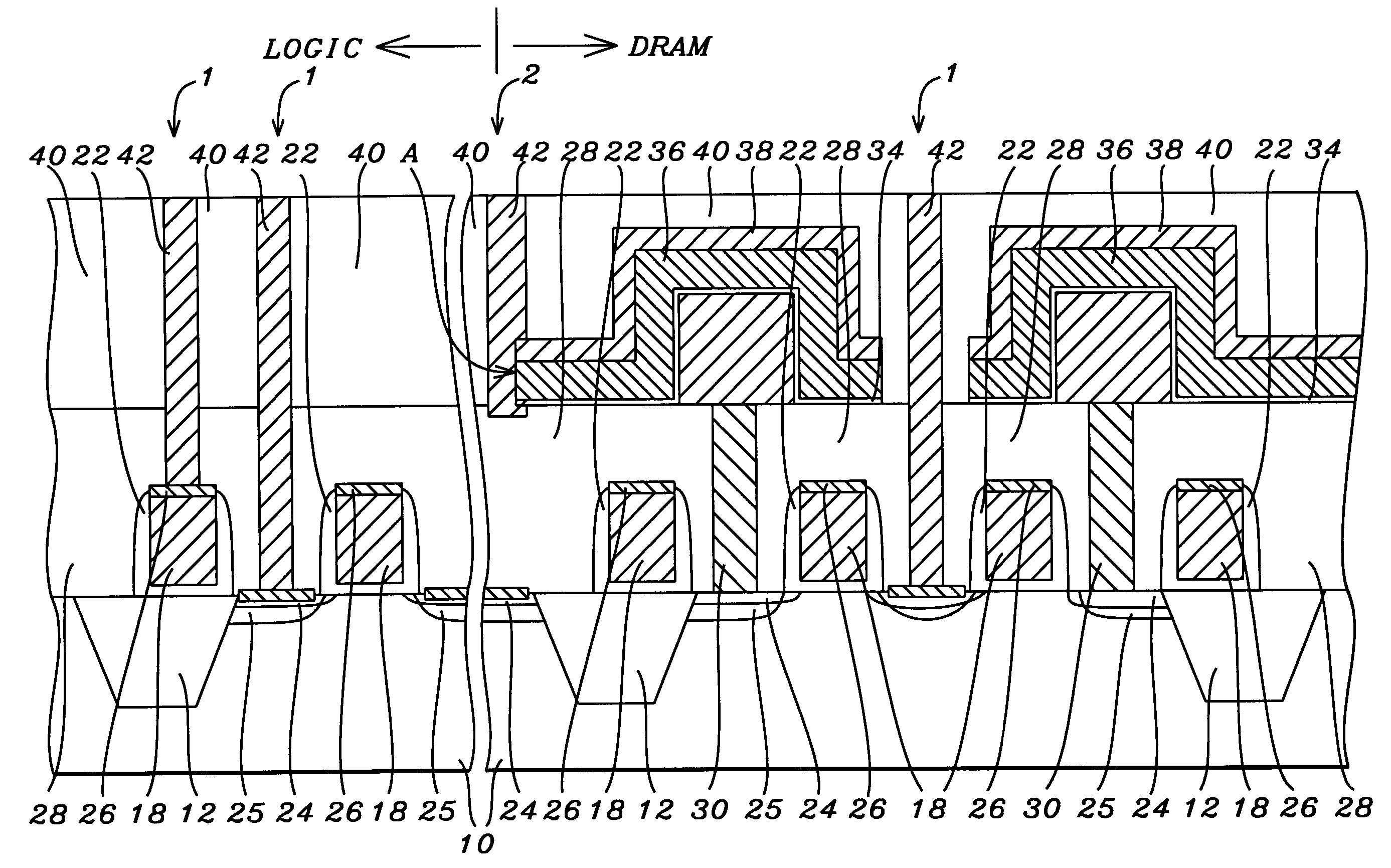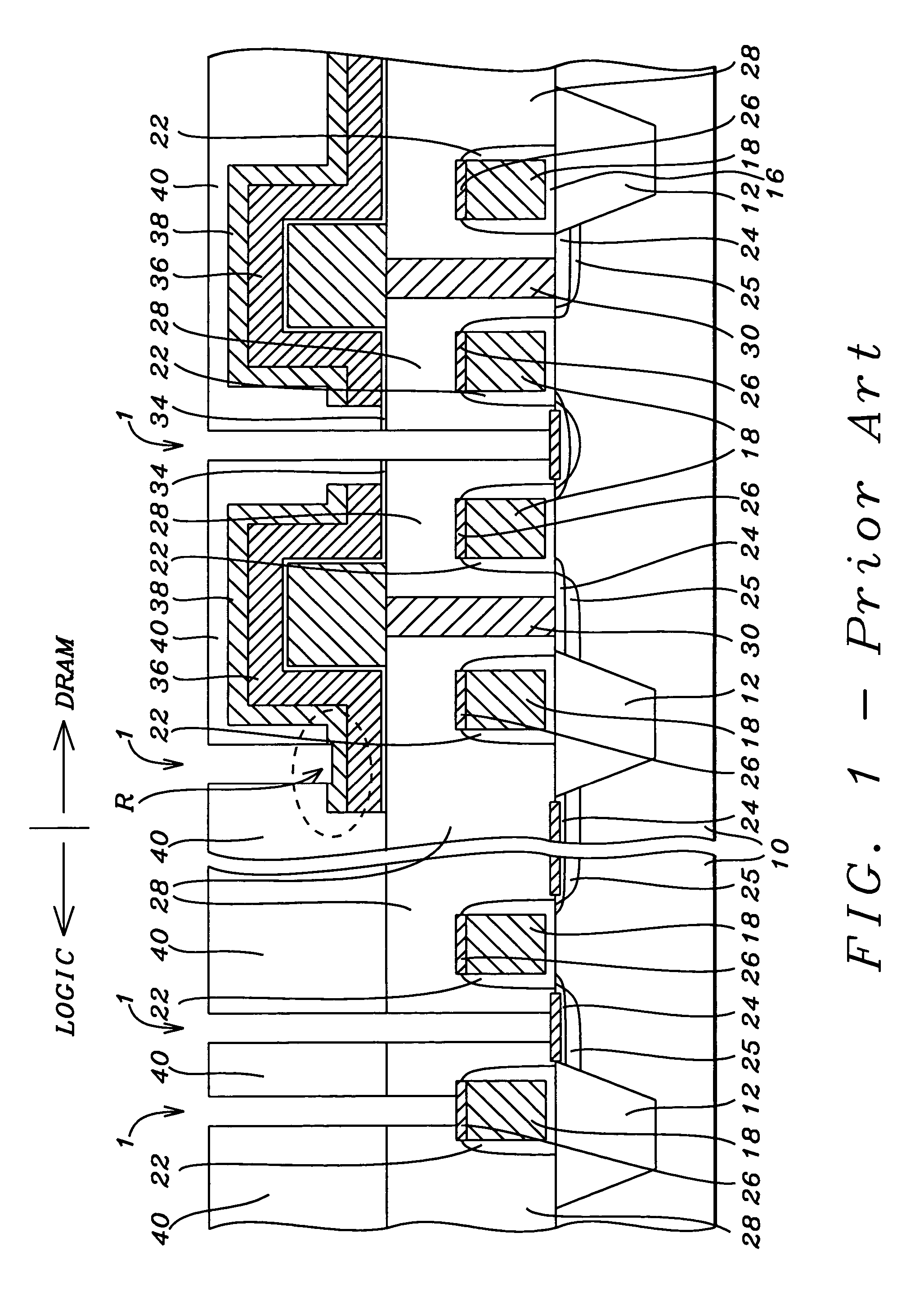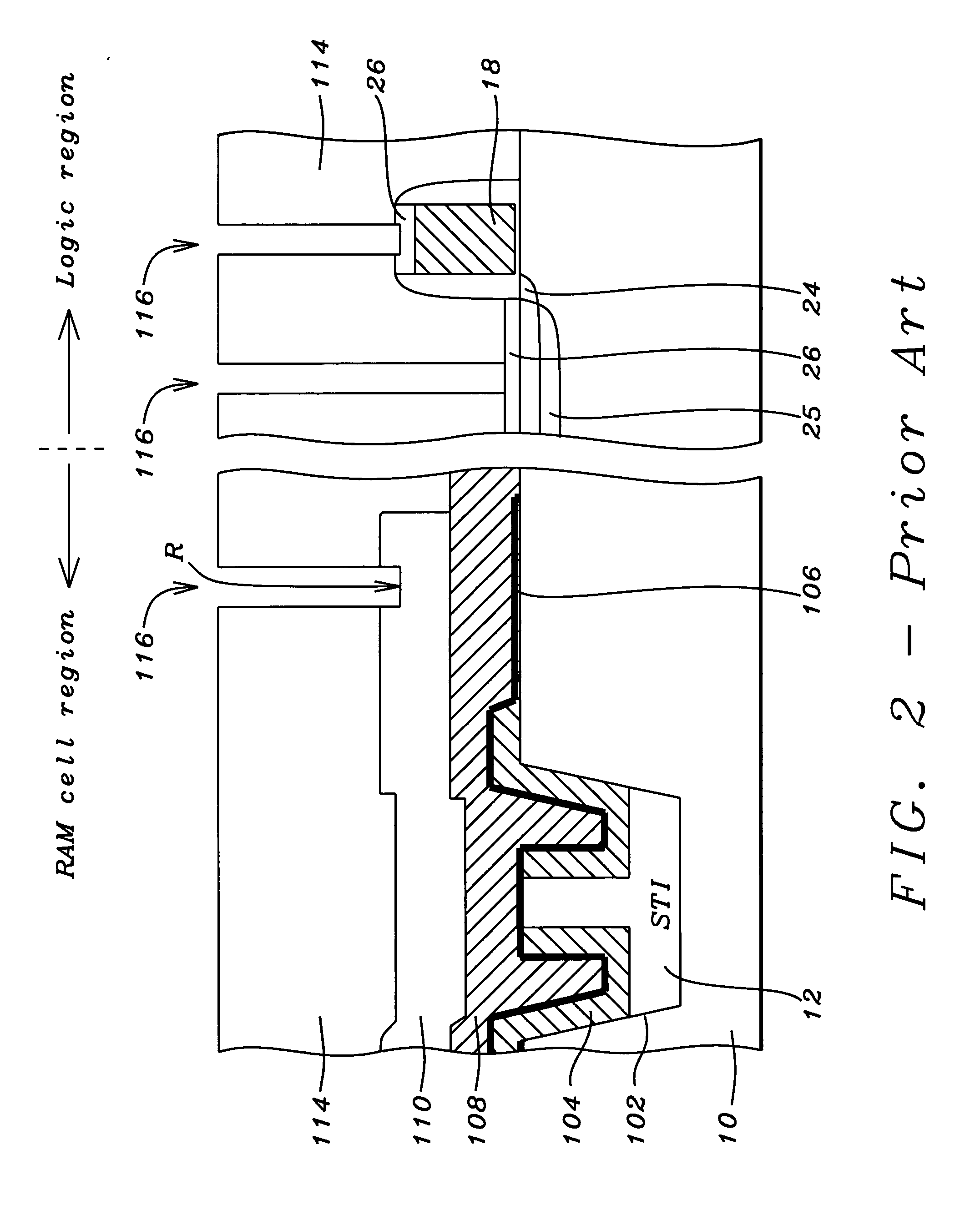Structure for reducing leakage currents and high contact resistance for embedded memory and method for making same
a technology of leakage current and embedded memory, which is applied in the direction of semiconductor devices, semiconductor/solid-state device details, electrical apparatus, etc., can solve the problems of difficult to make contacts to shallow diffused junctions for fets without overetching, affecting the efficiency of etching, and alignment problems on integrated circuits having 0.1 micron (um) minimum feature sizes, etc., to achieve more relaxed alignment tolerances and alignment tolerances
- Summary
- Abstract
- Description
- Claims
- Application Information
AI Technical Summary
Benefits of technology
Problems solved by technology
Method used
Image
Examples
Embodiment Construction
[0022] The method for making contact openings of varying depths in a planar insulating layer on a substrate having logic / memory circuits using a single masking and etching step is now described in detail. The method results in contacts that are damage-free at the substrate surface while providing contact openings for low-contact resistance to capacitor top electrodes with an anti-reflective coating (ARC). Although the invention is described for making contacts to top electrodes of a stacked or a trench capacitor, it should be understood by those skilled in the art that the contact openings can be made, in general, to a conducting layer having an ARC on the surface. However, the method is particularly useful for making low-resistance contacts to capacitor top electrodes.
[0023] Referring now to FIG. 3, the method begins by providing a semiconductor substrate 10, a portion of which is shown in the FIGS. FIG. 3 shows a schematic cross-sectional view of the substrate having a logic regi...
PUM
 Login to View More
Login to View More Abstract
Description
Claims
Application Information
 Login to View More
Login to View More - R&D
- Intellectual Property
- Life Sciences
- Materials
- Tech Scout
- Unparalleled Data Quality
- Higher Quality Content
- 60% Fewer Hallucinations
Browse by: Latest US Patents, China's latest patents, Technical Efficacy Thesaurus, Application Domain, Technology Topic, Popular Technical Reports.
© 2025 PatSnap. All rights reserved.Legal|Privacy policy|Modern Slavery Act Transparency Statement|Sitemap|About US| Contact US: help@patsnap.com



